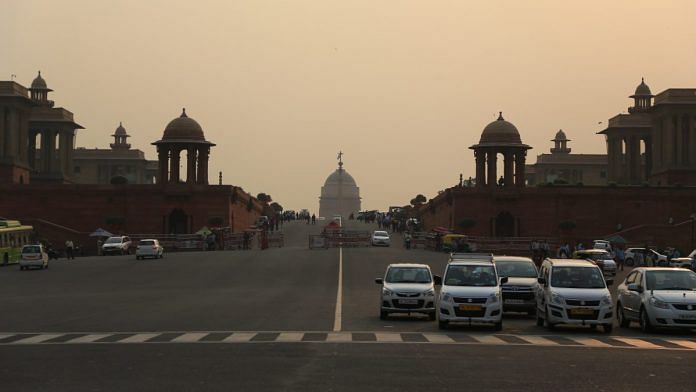New Delhi: Amid a nationwide lockdown to contain the spread of Covid-19 pandemic, the Narendra Modi government has decided to rank all Union government ministries over their performance on implementation of the Direct Benefit Transfer (DBT) programme.
This is the first time that ministries will be ranked by the nodal DBT Mission on their performance. In the last fiscal, states and union territories were ranked for the first time on DBT payouts, with Haryana securing the first position and West Bengal languishing at the bottom.
In 2019-20, the total transfer under the DBT Mission was to the tune of Rs 2.63 lakh crore, covering over 400 schemes run by 56 ministries.
Speaking to ThePrint about the latest plan, a senior government official said the DBT Mission under the Cabinet Secretariat is monitoring every ministry’s performance on the basis of several criteria.
These include digitisation efforts like the creation of a provision for online applications, kiosks for offline applications, a friendly application form that does away with unnecessary fields, and Aadhaar authentication — based on biometrics, a one-time password (OTP) or demography.
A second government official said the ministries will also be assessed on factors such as providing beneficiaries a facility to track the status of their applications online.
The ministries will also have to ensure the DBT Bharat portal is updated regularly and carries scheme descriptions, including budget details as well as regular submission of monthly progress reports and estimated savings.
Also read: After Modi’s appeal, AYUSH ministry gets over 2,000 proposals to tackle Covid-19 pandemic
How the ministries will be ranked
According to the two government officials quoted above, the DBT Mission has already identified multiple weightages for the ranking.
The biggest factor, carrying a 50 per cent weightage, is end-to-end digitisation.
Under this parameter, the mission will assess if the ministries are ensuring the provision of an option to submit online applications, and if their verification process for beneficiary approval and benefit calculation have been digitised. This criterion will also cover the proportion of fund transfer disbursed electronically (for cash schemes), and the proportion of Aadhaar authenticated expenditure (in-kind schemes).
A 25 per cent weightage will be given for usage of Aadhaar. Under this, the mission will assess if a scheme has been notified under Section 7 of the Aadhaar Act, if the Aadhaar data has been collected from beneficiaries at the time of registration, and the progress in Aadhaar seeding or authentication. It will also see the proportion of mobile seeding in the database.
A 20 per cent weightage has been fixed for DBT Bharat portal, and reporting compliance to assess the progress in development of schemes, management information system and sharing of data through web services, and progress in reporting monthly data on the portal.
A 5 per cent weightage has been given to estimated savings compliance to see if estimated savings have been reported on the portal.
Also read: Doctors, IAS officers & a scientist — the 5 women leading India’s fight against Covid-19
What is DBT?
The DBT programme was introduced by the Congress-led United Progressive Alliance government in 2013 to ensure efficient delivery of services and accurate targeting of beneficiaries through transfer of funds or goods under welfare schemes directly to the beneficiaries.
After the Modi government came to power in 2014, the initiative got a boost wherein benefits, cash or otherwise, were delivered directly to the identified beneficiaries using Aadhaar.
While the DBT Mission was created to act as a nodal point for implementation for the programme under the erstwhile Planning Commission, it was shifted under the Cabinet Secretariat in 2015.
ThePrint had reported in July 2019 how the Modi government gave a big push to DBT funds in the last year of its first term in office as almost all states in the country, irrespective of their population, showed a huge surge in direct transfer of funds in 2018-19.
There was a three to over eight-fold jump in direct transfer of funds to states in 2018-19 as compared to 2017-18, according to the DBT Mission data.
Also read: Over 60% migrants don’t know govt measures in place for them to deal with lockdown: Survey






